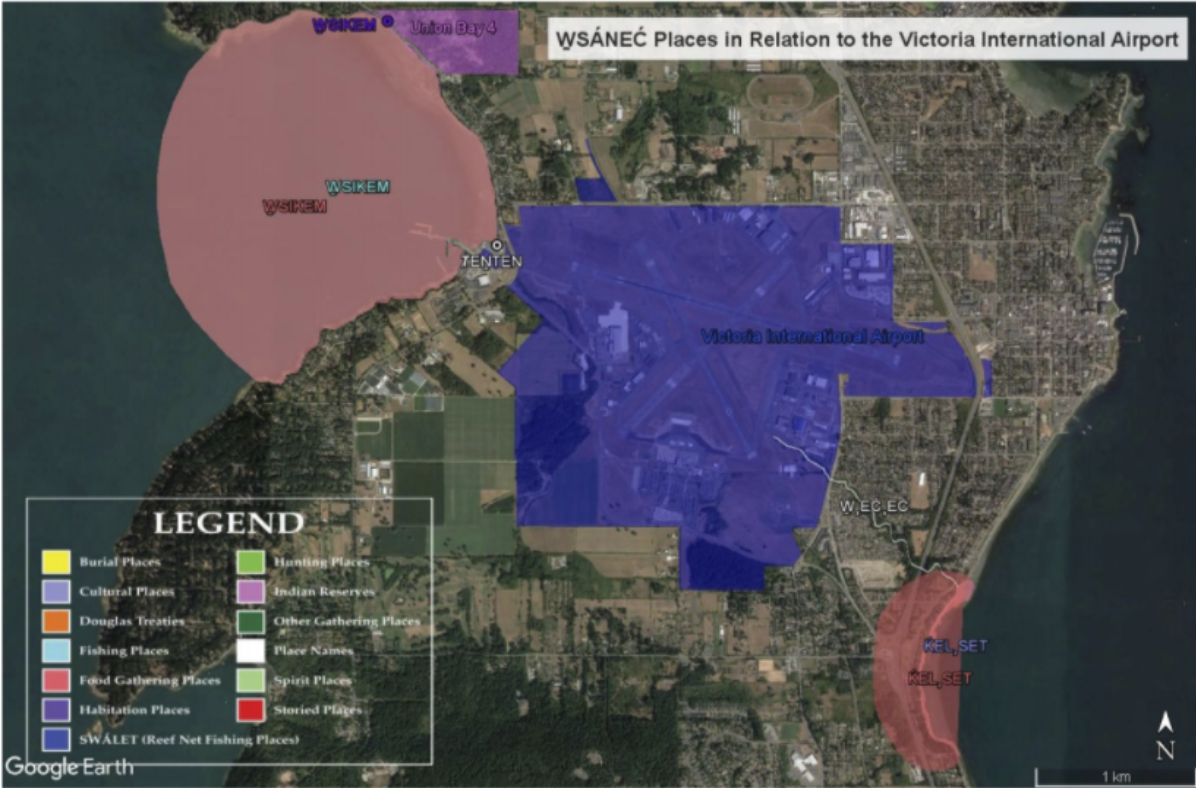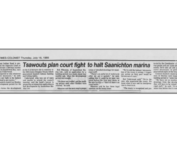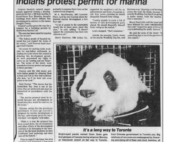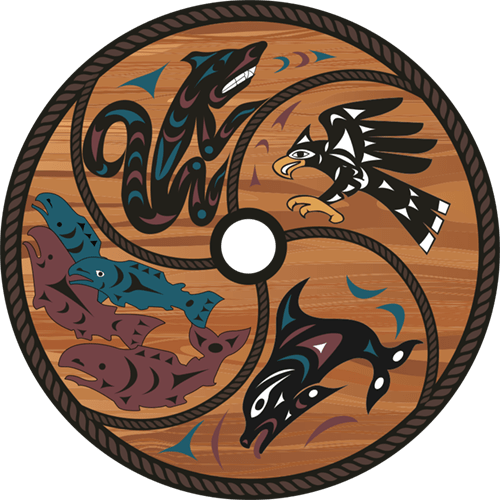The WLC is currently in discussions with Transport Canada and the Victoria Airport Authority to pursue economic opportunities for W̱SÁNEĆ people, a meaningful role for W̱SÁNEĆ decision-making, and improved care for the environment on lands currently occupied by the Victoria International Airport.
The large parcel of land in the middle of the Saanich Peninsula (blue) is owned by Transport Canada and leased by the Victoria Airport Authority.
The nearly 1200 acres of land owned by Transport Canada lies directly between the W̱SÁNEĆ villages and prevents W̱SÁNEĆ people from exercising their rights and sacred responsibilities in this region.
Many sites within the airport boundary have historical significance and ongoing importance to the W̱SÁNEĆ. W̱SIKEM (“Place of Clay”), to the west, is a W̱SÁNEĆ village and the bay is used as a harvesting place for herring, herring roe, and butter clams. And, to the east, ḰEL,SET (Bazan Bay), fed by ḰEL,SET (Reay Creek), was a W̱SÁNEĆ village and is a harvesting place for camas, purple sea urchin, green sea urchin, and seagull eggs. W̱SÁNEĆ people would portage through the airport lands using ȾEṈTEN (Tenten Creek) and ḰEL,SET (Reay Creek) to travel across the Saanich Peninsula.
The creeks that run through the airport lands are fundamental to W̱SÁNEĆ food security, relationships with other Indigenous peoples, and culture. According to Floyd Underwood, of the Tsawout Nation, who obtained the information from Tseycum Nation elders:
“The site at Bazan Bay, called ḰEL ̧SET (Bazan Bay, Outfall of Reay Creek) was of great significance in that it provided a gathering site for the camas as well as Xiwe (purple sea urchin) and Sqwiti (Green sea urchin). This was also [a] traditional site for greeting and celebrating visits from neighbouring tribes. From this site, our peoples also launched their canoes to travel to the various Gulf Island sites to gather fresh seagull eggs. This area was used primarily as a gathering and launching area during the Spring/Summer months. The site enabled a safe launch area for our peoples to carry on trade and cultural relations with other Coast Salish tribes and villages in Canada and the United States.”
Despite the respectful relationships established in the oral version of the Douglas Treaties, the rights established in the written version of the Douglas Treaties, and the prioritization of reconciliation by all levels of government, W̱SÁNEĆ people are barred from the airport lands. W̱SÁNEĆ people have not been able to collect camas, portage, or bathe on airport land since it was established in the late-1930s, at the beginning of World War II. At that time, construction began on runways and terminals, and approximately 43.9 hectares of foreshore was filled to create the original wartime seaplane base just south of W̱SIKEM.
Additionally, W̱SÁNEĆ people have no formal role in the decision-making processes at the Victoria International Airport. For instance, over the history of the airport’s operations there have been 13 identified contaminated sites. Recent remediation efforts have reduced the number of contaminated sites to four. But with very little involvement, W̱SÁNEĆ peoples’ sacred responsibilities to ensure proper care of the land has been increasingly difficult.
Further, while art by W̱SÁNEĆ carvers is hung in the terminal building and near the entrance and many W̱SÁNEĆ people are employed by the VAA, W̱SÁNEĆ people receive no direct economic benefits from the airport. The airport is a major boon to the local economy and generates a significant amount of revenue itself: In 2018, the Victoria Airport Authority paid $1.9 million in rent to Transport Canada, $1.4 million in property taxes to local municipalities, and generated $38.4 million in revenue. To ensure that W̱SÁNEĆ people benefit from this use of W̱SÁNEĆ land, the WLC is seeking an agreement for revenue sharing and other benefits that models the agreement between the Vancouver Airport Authority and Musqueam Indian Band.
A major obstacle to reaching a satisfactory agreement is the complicated jurisdictions in the area and the signature of an 80 year lease between Transport Canada and the Victoria Airport Authority. Nothing in this agreement addresses W̱SÁNEĆ Douglas Treaty rights and W̱SÁNEĆ people were not consulted when it was originally signed in 1997.
Nevertheless, the W̱SÁNEĆ Leadership Council is committed to ensuring Douglas Treaty rights are upheld, and we are currently working with Transport Canada and the Victoria Airport Authority towards a satisfactory agreement.
To stay up to date on this story, please subscribe to our newsletter.
RECENT POSTS
How are we doing?
“The site at Bazan Bay, called ḰEL ̧SET (Bazan Bay, Outfall of Reay Creek) was of great significance in that it provided a gathering site for the camas as well as Xiwe (purple sea urchin) and Sqwiti (Green sea urchin). This was also [a] traditional site for greeting and celebrating visits from neighbouring tribes. From this site, our peoples also launched their canoes to travel to the various Gulf Island sites to gather fresh seagull eggs. This area was used primarily as a gathering and launching area during the Spring/Summer months. The site enabled a safe launch area for our peoples to carry on trade and cultural relations with other Coast Salish tribes and villages in Canada and the United States.”







